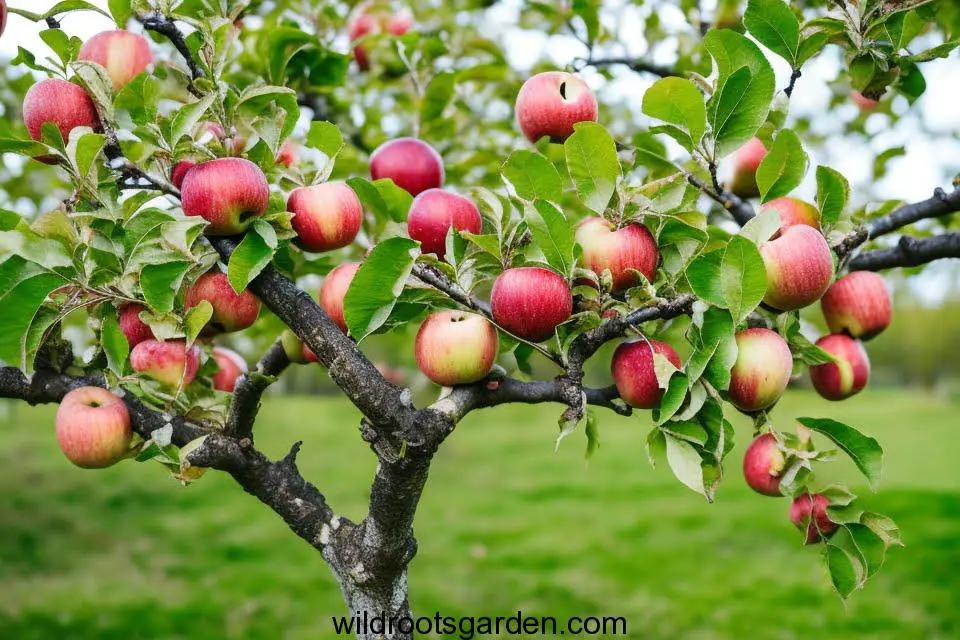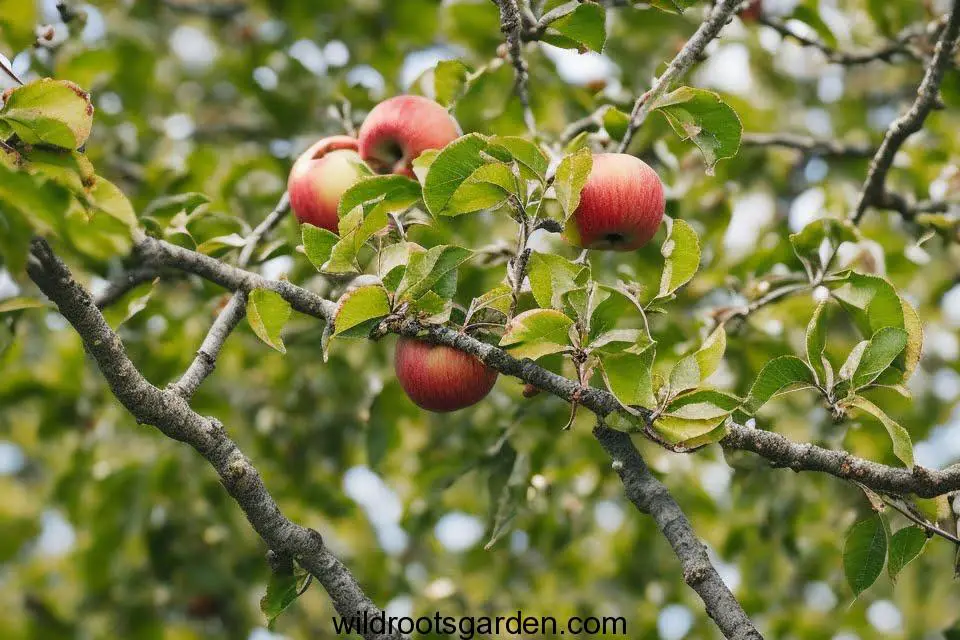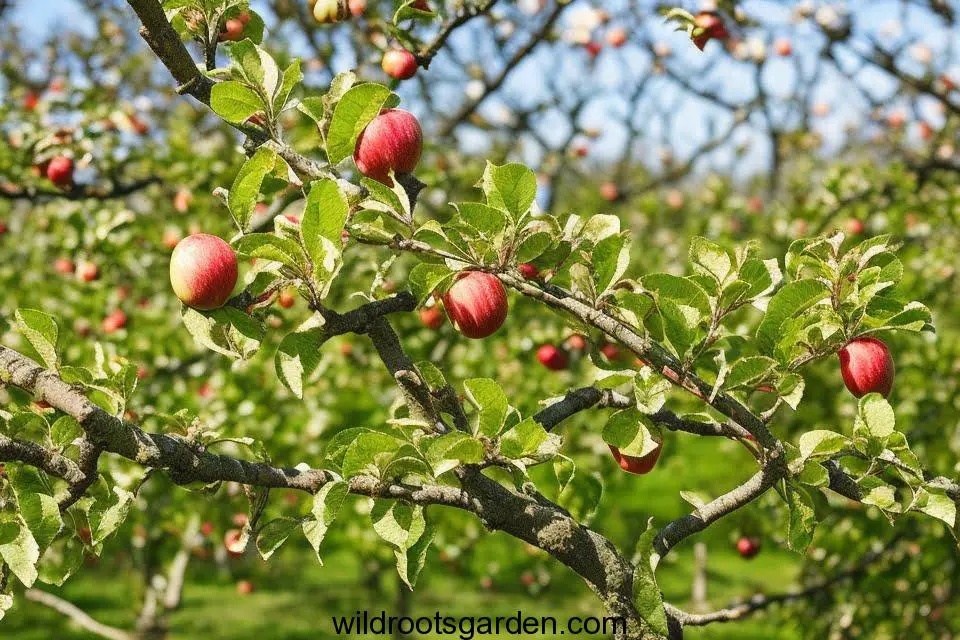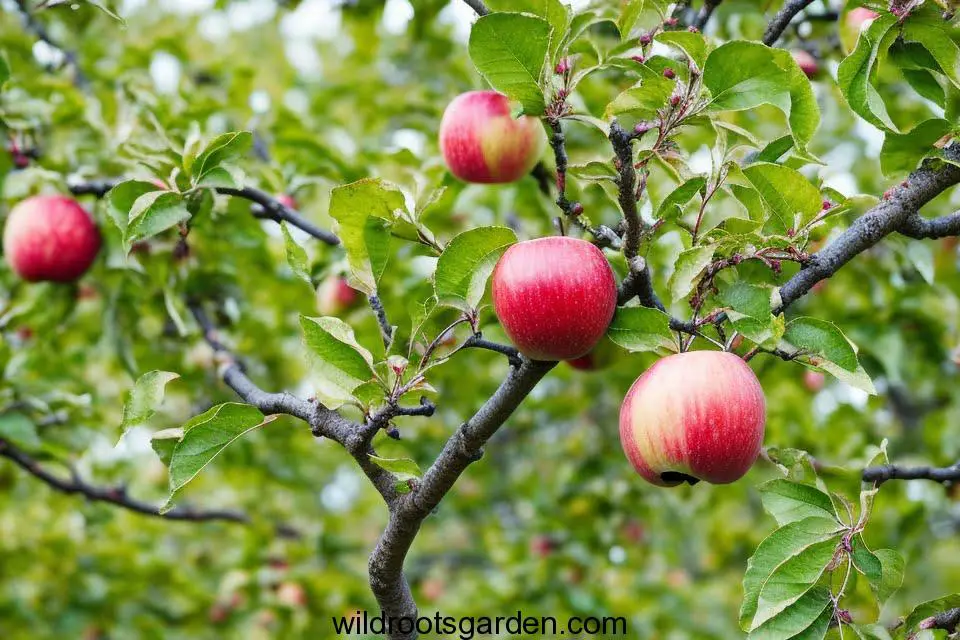Introduction
Apple trees are renowned for their tremendous fruit output and rich foliage. Any gardener or homeowner may become concerned if an apple tree fails to produce leaves, though. This article will examine the causes of an apple tree’s failure to produce leaves and offer workable solutions to the problem.

Understanding the Importance of Leaves
An apple tree’s entire health and growth depend on its leaves. They are essential to the process of photosynthesis, which turns sunlight into energy for trees. While water moves through the tree during transpiration, leaves also aid in controlling this process. The ability of the tree to create enough oxygen, nutrients, and energy, which are necessary for fruit development, is ensured by healthy leaves.
Possible Causes of Apple Trees Not Growing Leaves
- Insufficient Sunlight
Apple trees need enough sunlight to grow and prosper. Leaf development and general growth might be hampered by a lack of sunlight. The tree might not get enough sunlight if it is bordered by tall structures or is shaded by bigger trees. A tree that receives insufficient sunlight may become weaker and more vulnerable to pests and illnesses.
- Improper Pruning Techniques
The growth of apple tree leaves might be significantly impacted by improper pruning. When branches and leaves are removed in excess or using the wrong pruning techniques, the tree’s capacity to efficiently photosynthesize is hampered. The right pruning techniques must be used, such as removing dead or diseased branches and encouraging balanced development.
- Nutrient Deficiencies
Apple trees may experience restricted development and a lack of leaves due to nutrient shortages. Nitrogen, phosphorus, potassium, and magnesium are important elements needed for healthy leaf development. The ability of the tree to develop foliage can be hampered by inadequate soil levels of these nutrients. Nutrient shortages can be addressed with the use of soil testing and suitable fertilization.
- Pest and Disease Infestation
The health of an apple tree’s leaves can be severely harmed by pests and diseases. Aphids, mites, and caterpillars are examples of insects that feed on leaves and harm or stunt their growth. Defoliation can also be caused by ailments including apple scab, powdery mildew, and fire blight. Leaf-related problems can be reduced by employing disease-resistant apple tree types and pest management techniques.

- Environmental Stress Factors
Apple trees may not produce leaves if the environment is harsh. Leaf loss or leaf development can be hampered by wet soil, dryness, frost damage, and high temperatures. These stressors can be lessened by providing the tree with sufficient irrigation and weather protection.
Solutions for Apple Trees Not Growing Leaves
- Adjusting Sunlight Exposure
Consider cutting surrounding trees or clipping branches to let more light reach the tree if it is not getting enough sunlight. Make sure the tree is put where it will receive enough sunlight throughout the day.
- Correct Pruning Practices
Maintain a balanced structure, remove dead or diseased branches, and promote new development when pruning your tree properly. To reduce undue stress on the tree, pruning should be done during its dormant season.
- Nutrient Management
To find any nutrient deficits, examine your soil. Use the proper fertilizers or organic amendments in accordance with the findings to supply the nutrients required for leaf development. To make sure the tree is receiving enough water, check the moisture levels of the soil frequently.
- Pest and Disease Control Measures
To efficiently control pests, use integrated pest management techniques. This can entail importing helpful insects, applying horticultural oils and insecticidal soaps, or both. Choose disease-resistant apple tree cultivars and use the proper fungicides as necessary to prevent disease.

- Mitigating Environmental Stress
By providing appropriate protection or employing protective coverings as needed, shield the apple tree from severe weather conditions. Make sure to use suitable watering techniques so the tree may get enough water without becoming soggy.
Conclusion
Finding the root causes and taking the necessary remedies are crucial when an apple tree fails to produce leaves. It is feasible to rejuvenate leaf growth and advance the tree’s general health by addressing issues like inadequate sunshine, poor pruning, nutrient deficits, pest and disease infestation, and environmental stress. The apple tree will flourish and produce abundant harvests for many years to come with regular care, careful monitoring, and fast intervention.
FAQs
- Q: Can I grow an apple tree indoors? A: While apple trees prefer outdoor conditions, certain dwarf varieties can be grown in containers and kept indoors with adequate sunlight and care.
- Q: How often should I fertilize my apple tree? A: Fertilize your apple tree once or twice a year, preferably in early spring and late fall, using a balanced fertilizer specifically formulated for fruit trees.
- Q: Are there any natural remedies for controlling apple tree pests? A: Yes, several natural remedies like neem oil, garlic spray, or insecticidal soap can be effective in controlling common apple tree pests.
- Q: Can excessive watering cause leaf loss in apple trees? A: Yes, overwatering or waterlogged soil can lead to root rot and subsequent leaf loss in apple trees.
- Q: How long does it take for an apple tree to grow leaves after planting? A: After planting, apple trees typically start growing leaves within a few weeks, depending on various factors such as variety, environmental conditions, and overall tree health.

